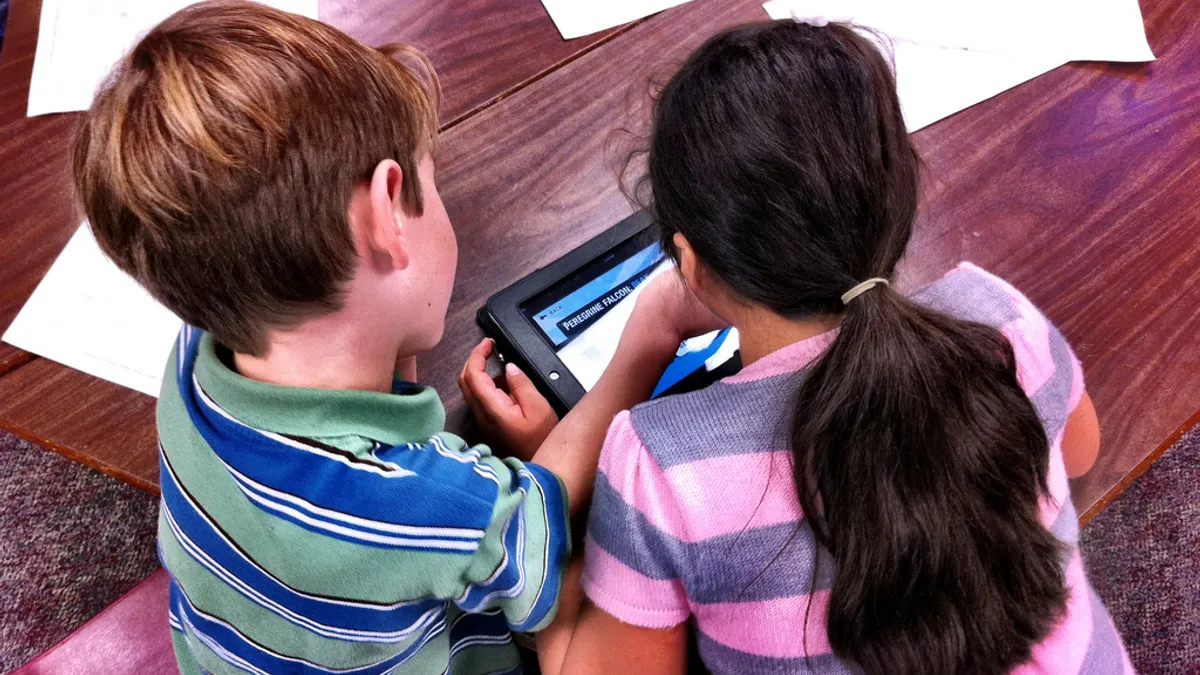As digital learning materials slowly replace traditional print-based resources, open educational resources, or OERs, are gaining popularity in a number of schools and districts. OERs include any type of learning materials that are released into public domain under an open license, and teachers are free to use, copy, share and amend them to suit the needs of their students.
On the internet, the world of open educational resources is nearly endless — and it can be overwhelming to educators in search of standards-aligned lesson plans that fit their specific needs. What constitutes a high-quality OER, and what should teachers (and districts) look for? Here are five important questions to ask when sifting through the morass of OERs on the web.
How closely does it align with state standards?
"The most important thing in any curriculum is alignment with the standards, simply because there’s a very important coherence to them," says Kate Gerson, managing partner at UnboundEd and former curriculum architect for EngageNY, a collection of Common Core OERs created with a Race to the Top grant.
"They represent a staircase of proficiency. If you want your students to graduate ready for college or a career, there’s specific work they’ve got to be doing in each grade—and we’re seeing lots of research come in about how standards-aligned curriculum is having a positive impact on student performance."
The tricky part, she says, is figuring out which resources truly adhere to standards. "Publishers will often make a claim that something is standards-aligned even when it’s not," says Gerson.
Teachers can vet OERs by checking EdReports, an independent nonprofit that produces thorough, evidence-based reviews to assist teachers in choosing the best available curriculum.
Does it communicate clearly and promote student learning and engagement?
Even if an OER lesson plan is standards-aligned, it might be weak or ineffective, says Kristina Peters, public interest technology and education policy fellow at New America and a former classroom teacher. "A variety of OER platforms rely on crowdsourcing, and you can generally see through the algorithms those that rise to the top. You can count on that to some extent, but every classroom is different."
Educators should read reviews, but also weigh materials against their own teaching style, preferences and classroom atmosphere. "Implementation is going to be the best way to evaluate the resource and see how it works in your classroom," Peters says. "You’ll be able to see if it is something that really is quality and warrants recommending it to others or using it again."
Does it meet the needs of specific student groups?
Another element to consider is whether the resource will meet students’ needs. "Many of the resources I’d find online to use in my classroom didn’t apply well because I had a large percentage of English language learners," says Peters. "We needed a different approach."
For ELL learners in particular, OERs can be difficult to locate. "When you start adding state standards, it becomes very hard to hold the standards and meet the needs of ELLs," Gerson says. "There’s not a ton of material out there. Some developers will claim standards alignment and appropriateness for ELLs, but I know very few."
For elementary ELL students, she recommends the newest edition of Expeditionary Learning for K-5 from EL Education. There are also few OER resources, at present, for students with disabilities. "Again, there are a limited number of lessons that meet the need of those learners and the state standards," she says.
How are the practice exercises and assessments?
The current world of OERs doesn’t include many formative assessments, but quality resources do include practice activities for students. "The best assessments in any content are curriculum-embedded, where teachers are providing students with performance tasks that ask them to apply their learning," says Gerson. "That allows teachers to measure students’ learning and get feedback as they go."
Peters agrees that currently, there are a limited number of OER benchmark assessments available. "There are activities and worksheets, and some assessments, but that’s one area that needs to strengthen," she says.
What are some of the best places to find high-quality OERs?
"Honestly, if you’re looking for a complete curriculum, EngageNY includes full textbook substitutes for ELA or math," Peters says. "Utah Department of Education has also developed full science textbooks."
When teachers are looking for individual resources, she recommends OER Commons, a searchable online library of OERs. "There are also some great materials on Edmodo Spotlight," she adds. "They rely on crowdsourcing and a review system that’s helpful for locating quality resources."
UnboundEd’s mission is to collect and sequence the best OER material out there, Gerson says. "The most reliable OER developers we’ve found are Expeditionary Learning, Odell Education, and Illustrative Mathematics," she says. "You can find all of them through UnboundEd."
Combing the web for OERs that will suit the needs of particular teachers and students isn’t an easy task—but it’s an important one. "We can’t be casual in our evaluation of online content," says Gerson. "We have to be rigorous, because we have to be sure what we’re choosing has the best impact for kids."




















